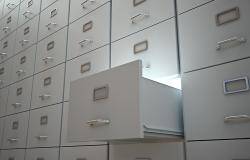The Power Revolution and the Cloud Computing Revolution
In the late 1800′s and early 1900′s the power revolution caused people to rethink the way that tasks were performed. Electrical creation, transmission, and delivery standards caused power to become more available and much less expensive. This encouraged the invention of new tools to perform everyday tasks such as washing clothes.
The Power Revolution and the Cloud Computing Revolution
In the late 1800′s and early 1900′s the power revolution caused people to rethink the way that tasks were performed. Electrical creation, transmission, and delivery standards caused power to become more available and much less expensive. This encouraged the invention of new tools to perform everyday tasks such as washing clothes.
In a similar manner, broadband access and virtualization technology have made computing power more available and much less expensive. The era of developing cloud software tools to perform everyday computing tasks is underway.
Washing machines and ERP software
 Around 1905 the electric washing machine was invented. Unlike the legacy washboard that you rub clothes against, the washing machine utilized an electric motor to do the work for you. But it wasn’t just a matter of taking a washboard and attaching it to a motor … the new technology afforded a number of new benefits and challenges.
Around 1905 the electric washing machine was invented. Unlike the legacy washboard that you rub clothes against, the washing machine utilized an electric motor to do the work for you. But it wasn’t just a matter of taking a washboard and attaching it to a motor … the new technology afforded a number of new benefits and challenges.
Moving Legacy ERP to the Cloud is not Recommended
Suppose washing machines had only evolved to the point of mechanizing the scrubbing process. The process of setting each garment, getting water to the machine, adding detergent, and partially drying the clothes would still be done manually. The result would be a new technology with very little benefit.
This would be similar to the case of moving a legacy client-server ERP application to the Cloud. You gain some minor benefits from reduced computing costs and outsourced IT, but the majority of the problems (clunky client software, expensive maintenance, cumbersome remote access, lengthy deployments, etc) would be transferred to the new technology.
Designing Around Cloud Technology
Software developed for cloud computing environments, just like washing machines designed for power can include new features that were not possible using old technology.
Automatic water shut offs, spin drying, variable size loads, and many more features are included in modern washing machines. Access from anywhere, access from any device, enhanced collaboration, advanced security models, and connected/integrated applications are some of the benefits of today’s cloud ERP applications.
Most importantly, tomorrow will include even more features that we are still in the process of inventing. These features will only be available via web and cloud technology.
Technology Differences
Web-based technology lends itself to the cloud better than traditional client-server models. Just like electricity powered the motor in the new washing machine, web-technology powers the code in cloud-based applications. XML and web-services standards make it possible to use the cloud from anywhere on a wide variety of devices just like power standards such as voltage and frequency made it possible for various electrical devices to plug into the power grid.
Cloud based applications are stateless. This makes them usable over the Internet and makes them more scalable, more secure, and more reliable than legacy applications. Each request from a stateless application is self-contained and includes all authentication and task information. This makes it possible for multiple users to utilize the same application without reserving specific resources on the server. Cloud efficiencies make it possible to serve more users with the same amount of server resources.
Collaboration among cloud applications
The self contained nature of stateless web requests opens up new possibilities with regard to collaboration among applications. Imagine a client-server system applying tax logic by downloading several tables every month, storing them locally and then calculating transactional taxes. In a cloud world, the ERP application can send a request to a tax application and almost instantly receive the proper taxes to apply. During holiday shopping, additional resources can be allocated to this interface to ensure that the additional requests are served in a timely manner.
Summary
Moving legacy applications to the cloud is like attaching a plug and a motor to a washboard. In both cases, you have upgraded the technology. But, the retro-fitted machine will only deliver a fraction of the benefits that the new technology can deliver and will migrate several old problems to the new technology. An ERP application designed with the Cloud in mind will deliver all the benefits of cloud as well as future innovations.






